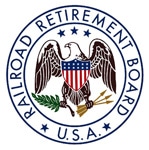Visit the Legislative Action Center to tell your member of Congress to back the REEF Act
The SMART Transportation Division is one step closer to closing a federal loophole that has been taking money away from railroaders who are out of work due to furlough, sickness, or injury.
SMART-TD, along with bipartisan support in Congress led by Nebraska Sen. Deb Fischer and Ohio Sen. Sherrod Brown, has been pushing for legislation to end this predatory practice affecting our most-vulnerable brothers and sisters.
The efforts of our National Legislative team of Director Greg Hynes and Alternate National Director Jarred Cassity made noteworthy progress last week. The bill to end this tax on our out-of-work members is called the Railroad Employee Equity and Fairness (REEF) Act.
The REEF Act passed through the U.S. Senate’s Budget Committee and is headed to the floor to be considered and voted on by the entire body.
SMART-TD will keep you up to date with the bill’s progress as it makes its way through the Senate and to the House of Representatives.
For more information on this bill and the Budget Committee vote, follow this link to the press release put out by Senator Sherrod Brown’s office or this notice from the AFL-CIO Transportation Trades Department.

 Under the Budget Control Act of 2011, and a subsequent sequestration order to implement mandated cuts, railroad unemployment and sickness insurance benefits are reduced by a set percentage that is subject to revision at the beginning of each fiscal year.
Under the Budget Control Act of 2011, and a subsequent sequestration order to implement mandated cuts, railroad unemployment and sickness insurance benefits are reduced by a set percentage that is subject to revision at the beginning of each fiscal year.